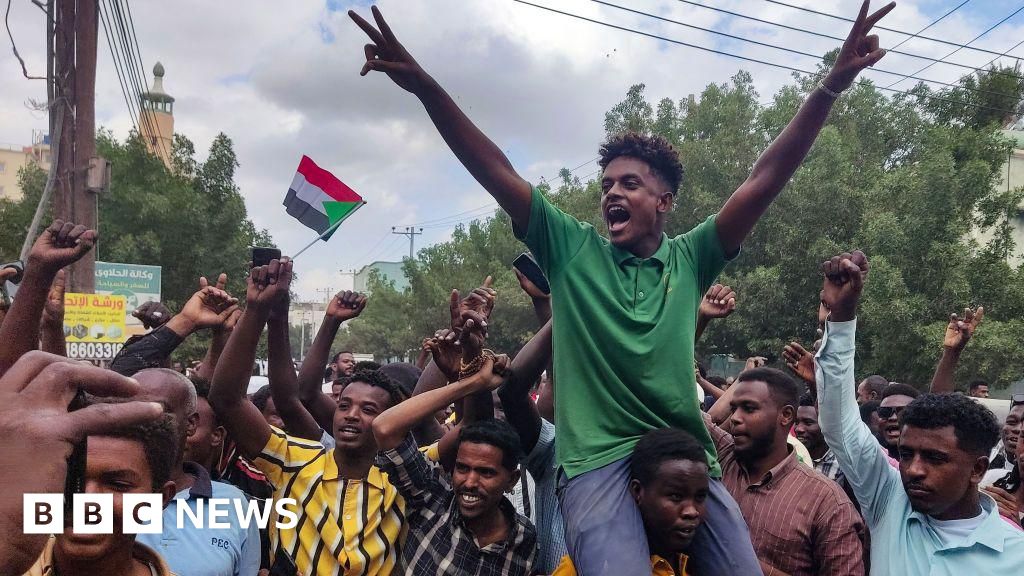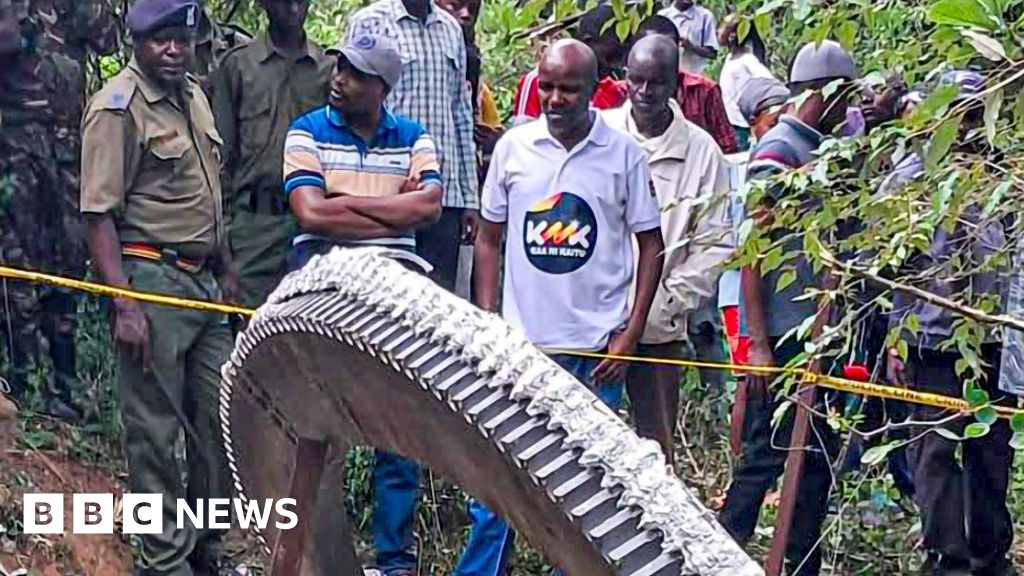ARTICLE AD BOX
By Geeta Pandey
BBC News, Delhi
image source, PTI
image captionChief Justice NV Ramana, centre, poses with all the female judges of India's Supreme CourtThe recent appointments of three female judges to the top court, and reports that one of them - Justice BV Nagarathan - could one day become India's first female chief justice, is being hailed as a "historic moment".
The three women - Justice Hima Kohli, Justice Bela M Trivedi and Justice BV Nagarathna - were sworn in on 1 September.
A photograph of Chief Justice NV Ramana with his female colleagues - the three new appointees and Justice Indira Banerjee who has been in the top court since 2018 - was widely shared on social media and made it to the front pages of newspapers.
Law Minister Kiren Rijiju called it a "historic moment for gender representation"; India's ambassador to the US said it was "a proud moment"; and many others tweeted congratulatory messages to the new justices on their "momentous day".
The appointments are no doubt welcome, as they narrow the gender gap in India's top court. But critics say celebrations are premature until the skewed gender balance across India's judiciary - which a retired female judge recently described as "an old boy's club" - is fixed.
Senior lawyer Sneha Kalita said the excitement over the potential first female chief justice was particularly misplaced. Even if all were to go to plan, Justice Nagarathan's turn to head the top court would come in 2027, about a month before she is due to retire.
"Having a woman as the chief justice will be a matter of celebration, but this appointment is just symbolic and won't have any impact," Ms Kalita said.
"When a new chief justice takes over, they need time to settle down," she said. "The first two months are generally spent on administrative work. What will she do in a month? She'll be the chief justice in name only."
image source, Getty Images
image captionA retired female judge recently described India's judiciary as "an old boy's club"Ms Kalita is a member of an association of women advocates who have filed a petition in the Supreme Court demanding fair representation of women in courts.
From 1950, when the Supreme Court was established, it took 39 years for Justice Fathima Beevi to be appointed the country's first female Supreme Court judge in 1989. "I opened a closed door," she told news website Scroll in 2018.
But hurdles remain - of the 256 Supreme Court judges appointed in the past 71 years, only 11 (or 4.2%) have been women.
The present 34-member Supreme Court has four women - the most ever. The 25 high courts in the states have 81 women among 677 judges - five of them do not have a single female judge.
"The representation of women in higher judiciary is almost abysmal," Ms Kalita said. "We represent half the Indian population, then why don't we have half the seats in the judiciary too?"
She said that if the collegium - which appoints judges - can't find enough qualified judges in district courts, then it should pick from the Supreme Court bar where "there are plenty of very good female lawyers".
image source, NurPhoto
image captionThere was outrage when former chief justice of India Ranjan Gogoi was given a clean chit in a sexual harassment caseLegal experts and judges, including Chief Justice Ramana, have recently called for more women judges.
"After 75 years of independence, one would expect at least 50% representation for women in the judiciary at all levels. But with great difficulty, we have now achieved a mere 11% representation of women in the Supreme Court," Justice Raman said earlier this month. "The issue must be highlighted and deliberated upon," he said.
In the UK, 32% of court judges are women and in the US 34% of state judges are women. The International Court of Justice has three women on its bench of 15 - 20% of the total.
In December, India's top legal official, Attorney General KK Venugopal, told the Supreme Court that more female judges must be appointed for "a more balanced and empathetic approach in cases involving sexual violence". Mr Venugopal's advice came after a male judge of a high court ordered a man accused of harassing a woman to visit her home with sweets and apologise to her.
Female lawyers have repeatedly challenged such orders where judges have indulged in victim shaming or suggested a compromise in a rape case. Gender experts point out that having more women judges would not necessarily put an end to misogyny in court.
"Women judges don't always root for their gender," Namita Bhandare, gender editor for news website Article 14, recently wrote in The Hindustan Times.
"It was a female judge who cleared a 39-year-old man of sexual assault of a child because there was no skin-to-skin contact. And former Chief justice of India Ranjan Gogoi was cleared in a sexual harassment case by a three-member committee of peers that included two women".
But, Ms Bhandare argued, the judiciary cannot remain the preserve of "upper class, dominant caste, majority religion men" and the doors must be opened to make space for "the multitude of voices that make our democracy vibrant".
And while "all women may not necessarily make better judges", said Ms Kalita, more should be encouraged to join the legal profession.
"If we're looking for a liberated nation, we must have gender parity in judiciary," she said. "More women judges in top courts will inspire more women to join law, and a society greatly benefits when there is gender parity on the bench."

 3 years ago
42
3 years ago
42








 English (US) ·
English (US) ·